Digital Health Opportunities in Public Health and Epidemiology
This feature article explores how digital health innovations — from mobile wallets and open-source EMRs to regional surveillance platforms — are transforming public health and epidemiology in Africa. It examines successful case studies (M-TIBA, MomConnect, DHIS2, OpenMRS, CommCare), market and infrastructure trends, entrepreneurship and financing models, regulatory and ethical considerations, and practical recommendations for policy-makers, funders, startups, and public-health practitioners.

Introduction — why this moment matters
Digital technologies are no longer optional add-ons for health systems — they are instruments for resilience, reach, and rapid response. In public health and epidemiology, the promise is particularly large: better disease surveillance, faster outbreak detection, expanded preventive care, and more equitable access to services when digital tools are designed for local realities. For Africa — a continent with immense diversity, fast-growing mobile connectivity, and a young entrepreneurial ecosystem — digital health offers pathways to leapfrog long-standing barriers in service delivery and data systems (World Health Organization, 2021; Africa Centres for Disease Control and Prevention [Africa CDC], 2023).
This article maps the landscape: what works, what’s scaling, what entrepreneurs should know, and what public-health leaders must do to turn creativity and innovation into sustained population health gains.
The foundation: connectivity, platforms, and policy
Two structural trends create opportunity. First, mobile and internet access in Africa has risen rapidly: by 2023–2024 mobile internet adoption and smartphone availability expanded, narrowing the “usage gap” that once kept digital services out of reach for many (GSMA, 2024). Second, institutions are moving from fragmented systems to common platforms and regional architectures that support interoperability, analytics, and shared governance (World Health Organization, 2021; Adegoke et al., 2024).
A clear sign of progress is the WHO African Region’s shift to DHIS2 for vaccine-preventable disease surveillance — a migration from siloed legacy tools to an interoperable regional platform that improves timeliness and data integration (Adegoke et al., 2024). Africa CDC has likewise prioritized a digital transformation strategy and launched continent-level digital health platforms to help Member States scale solutions suited to African contexts (Africa CDC, 2023; Africa CDC, 2024).
Case studies: proven, adaptable digital innovations
M-TIBA — a mobile health wallet for financial access
Kenya’s M-TIBA demonstrates how a relatively simple mobile-first financial product can expand health access: it lets users save, transfer, and earmark funds for care and has been used to facilitate insurance and provider payments in low-resource settings (Huisman et al., 2022). The model shows entrepreneurship can address both demand-side (affordability) and supply-side (provider payments/claims) frictions.
MomConnect — large-scale maternal messaging and engagement
South Africa’s MomConnect pairs automated maternal health messaging with a helpdesk platform, giving millions of women pregnancy-related information and a channel to ask questions. Evaluations show improved health knowledge, system engagement, and a model for national-scale mHealth programs (Barron et al., 2018; Kabongo et al., 2019).
DHIS2 & WHO AFRO regional platform — surveillance at scale
DHIS2’s IDSR and case-based modules have been piloted and scaled across many African countries to centralize reporting, enable near-real-time notifications, and link clinical and lab data for outbreak response (Adegoke et al., 2024). This migration from fragmented tools to a shared platform is a blueprint for regional epidemiology that supports precision public health.
OpenMRS & CommCare — open source for adaptability and frontline work
OpenMRS (open medical record system) has powered EMRs and outbreak response workflows across Africa, emphasizing local customization and capacity building (OpenMRS, n.d.; OpenMRS Mozambique case study, 2016). CommCare, a low-code platform for frontline workers, demonstrates how agile app building enables monitoring, case management, and program delivery at scale (Dimagi, 2024).
Where entrepreneurs and innovators should focus
-
Surveillance & analytics plug-ins — Build tools that integrate with DHIS2 and similar platforms: analytics dashboards, anomaly detection modules, and genomic/strain-tracking integrations. Countries are centralizing data; interoperable add-ons create value without reinventing base systems (Adegoke et al., 2024).
-
Last-mile workflows for community health workers (CHWs) — Offline-first mobile apps, decision-support, and supply-chain tools that work on low-cost devices keep frontline workers productive (Dimagi, 2024).
-
Health financing products — Micro-savings, pay-as-you-go, and insurance interfaces that connect to provider payment systems (e.g., digital wallets like M-TIBA) address catastrophic expenditure risks and can catalyze demand (Huisman et al., 2022).
-
Quality telemedicine models for mixed urban–rural markets — Hybrid hubs that combine remote specialists, local diagnostics, and logistics (lab/sample transport) reduce downstream referral burdens and create scalable services.
-
Data governance, privacy, and compliance services — As countries standardize reporting and move to regional platforms, compliant data-sharing frameworks, consent tooling, and secure hosting will be high-value services.
-
Local language UX and digital literacy tools — Content and UX that respect local languages and digital literacy reduce adoption friction and are often neglected by global vendors.
Business models and financing that work in Africa
-
Public-private partnerships (PPP): Many large deployments (MomConnect, national DHIS2 instances) succeeded because governments provided scale and credibility while NGOs and private firms brought product agility (Barron et al., 2018; Adegoke et al., 2024).
-
Blended finance: Grants and concessional capital de-risk early pilots; revenue from subscriptions, pay-per-use, or government contracts sustain scale.
-
Platform-plus services: Selling integrations, analytics, training, and hosting alongside core software produces recurring revenue and local capacity building (OpenMRS, Dimagi).
The epidemiology edge: digital tools that improve population health
Digital systems accelerate detection (real-time reporting), enable adaptive interventions (targeted vaccination or vector control), and support risk communication at scale. The DHIS2 regional platform and other integrated systems allow countries to move from passive surveillance to active, data-driven public-health action (Adegoke et al., 2024; WHO, 2021).
Additionally, combining digital case reporting with mobile phone-based contact tracing, wastewater surveillance, or participatory epidemiology tools expands sensitivity of surveillance networks and shortens response time.
Risks, gaps, and what must be solved
-
Digital divides and device affordability: Significant segments of the population still lack smartphones or affordable data; initiatives to expand affordable devices and zero-rating health services are vital (GSMA, 2024; Reuters, 2024).
-
Human capacity: Systems like DHIS2 require local technical staff for configuration, maintenance, and analytics; capacity building is an ongoing need (Adegoke et al., 2024).
-
Data governance & privacy: Cross-border data platforms require robust legal frameworks, consent models, and secure hosting arrangements to avoid misuse.
-
Sustainability: Pilotitis — the proliferation of unsustained pilots — remains a major barrier; alignment with national strategies and financing pathways is essential (World Health Organization, 2021).
Policy & governance: enabling innovation without chaos
National governments and regional bodies should:
-
Commit to interoperability standards and publish APIs and metadata registries so startups can build integrations instead of closed systems (WHO, 2021).
-
Make procurement more agile, allowing pre-qualified vendors, modular contracting, and performance-based contracts that favor impact.
-
Invest in digital public goods (open source platforms, national identity and health registries) while protecting privacy through clear laws and oversight (Africa CDC, 2023; World Health Organization, 2021).
Practical roadmap — nine actions for leaders and founders
-
Start small, design for offline.
-
Build to integrate (DHIS2/OpenMRS compatibility).
-
Co-design with ministries and frontline workers.
-
Include a clear sustainability/revenue model from day one.
-
Prioritize local data hosting & compliance.
-
Invest in capacity transfer, not vendor lock-in.
-
Use human-centered design in local languages.
-
Pilot with evaluation metrics tied to health outcomes.
-
Seek blended financing and PPPs.
Conclusion — creativity plus systems thinking
Africa’s digital health moment is real: increasing connectivity, stronger regional platforms, and a vibrant startup and NGO ecosystem create fertile ground for innovations that change how public health and epidemiology are done. Success will come to those who blend creativity with systems thinking — entrepreneurs who build interoperable tools, and public leaders who create governance, procurement, and financing environments where those tools can scale and sustain impact.
References (APA)
Adegoke, O. J., Rachlin, A., Porter, A. M., et al. (2024). Migration from Epi Info to District Health Information Software 2 for vaccine-preventable disease surveillance — World Health Organization African Region, 2019–2023. MMWR Morbidity and Mortality Weekly Report, 73, 529–533. https://www.cdc.gov/mmwr/volumes/73/wr/mm7323a2.htm
Africa Centres for Disease Control and Prevention. (2023). Digital transformation strategy. https://africacdc.org/download/digital-transformation-strategy/
Africa Centres for Disease Control and Prevention. (2024, November 10). A new digital health platform for Africa. https://africacdc.org/news-item/a-new-digital-health-platform-for-africa/
Barron, P., et al. (2018). Mobile health messaging service and helpdesk for South African pregnant and postpartum women (MomConnect): Implementation and lessons learned. [Article]. Journal/Publisher, 2018. https://www.ncbi.nlm.nih.gov/pmc/articles/PMC5922496/
Dimagi. (2024). CommCare evidence base and 2024 year-in-review. https://dimagi.com/resources/commcare-evidence-base/ and https://dimagi.com/2024-year-in-review/
Huisman, L., et al. (2022). A digital mobile health platform increasing efficiency and access: the M-TIBA example in Kenya. Global Health Action / BMC / Frontiers (2022). https://www.ncbi.nlm.nih.gov/pmc/articles/PMC9005819/
OpenMRS. (n.d.). Case studies and implementations (including Ebola response). https://openmrs.org/tag/case-studies/ and https://openmrs.org/mozambique-case-study/
GSMA. (2024). The State of Mobile Internet Connectivity 2024 (and Mobile Economy Sub-Saharan Africa 2024). https://www.gsma.com/r/wp-content/uploads/2024/10/The-State-of-Mobile-Internet-Connectivity-Report-2024.pdf and https://event-assets.gsma.com/pdf/GSMA_ME_SSA_2024_Web.pdf
World Health Organization. (2021). Global strategy on digital health 2020–2025. World Health Organization. https://www.who.int/publications/i/item/9789240020924
What's Your Reaction?
 Like
0
Like
0
 Dislike
0
Dislike
0
 Love
0
Love
0
 Funny
0
Funny
0
 Angry
0
Angry
0
 Sad
0
Sad
0
 Wow
0
Wow
0


















































































